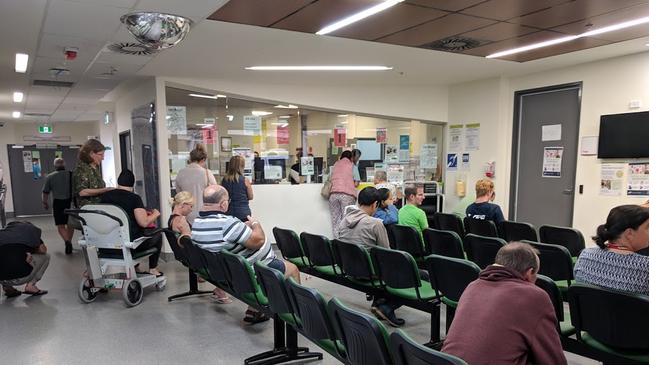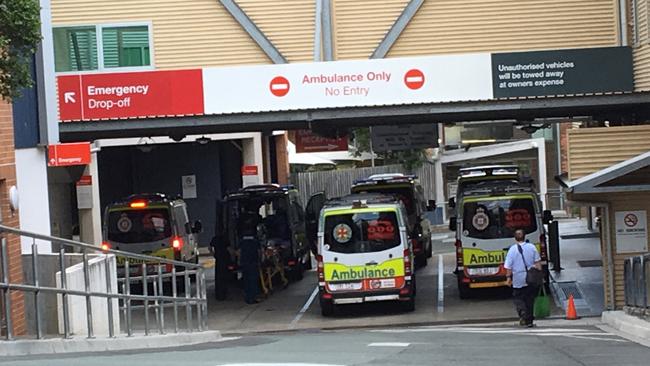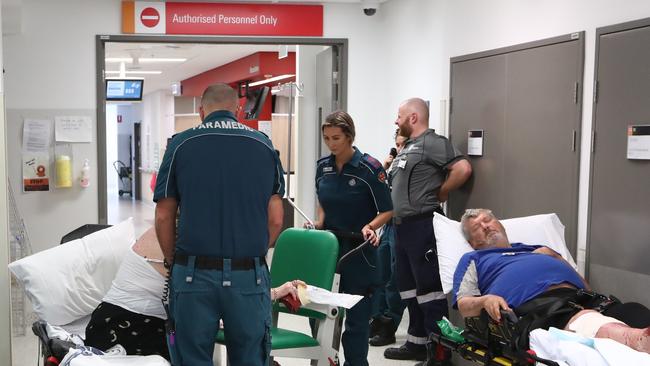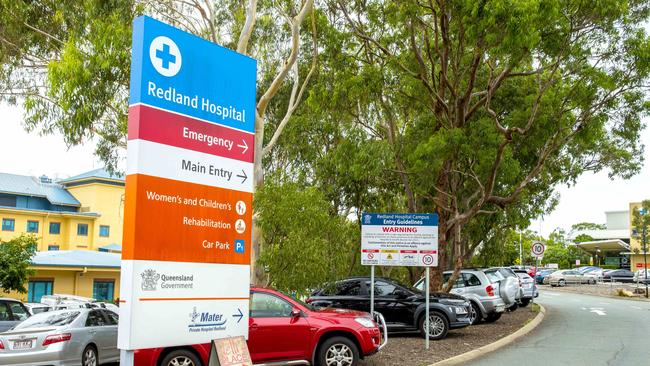Emergency departments at Gold Coast, Redland, Ipswich, Logan, Moreton under strain from non-urgent cases
Emergency departments across Queensland are being clogged up with non-urgent cases putting Covid-pressured hospital staff under pressure. CHECK OUT THE BEST AND WORST HOSPITALS
Logan
Don't miss out on the headlines from Logan. Followed categories will be added to My News.
Hundreds of people are dying in the state’s hospital emergency departments, which are being clogged up by people presenting for minor conditions.
Across the state, 771 people died while in a hospital emergency department in the past financial year, with New South Wales recording 1994 deaths and Victoria 1212.
Startling statistics released this week, showed southeast emergency departments at Logan, Redland, Ipswich, Moreton and Gold Coast hospitals were all struggling to attend to thousands of emergency cases within the regulated 10-minute time frame.

Queensland Health said almost 30 per cent of the 2 million cases arriving at emergency departments around the state were not urgent.
Exasperated emergency department staff had to attend cases including skin rashes, sleeping problems, ingrown nails, hiccups, surgical dressings, requests for medical certificates, sunburn, splinters and even a case of a sore toe.
The Australian Institute of Health and Welfare statistics ranked cases into five categories from people who needed immediate resuscitation, followed by emergencies, urgent cases, semi-urgent and non-urgent.
Queensland Health said the statistics showed demand for emergency department services was outstripping population growth as private health insurance costs rose and bulk-billing GP services dropped.
Australian College of Emergency Medicine president Clare Skinner said there were severe staff shortfalls due to Covid which had also added pressure with patient waiting times longer than ever.

Royal Brisbane and Women’s Hospital was plagued the most with a whopping 65,771 people turning up with non-urgent issues, equating to 44.7 per cent of the total 147,072 visits.
But the emergency department was still able to treat 58 per cent of the 16,290 patients deemed emergencies within the regulated 10-minute time frame.
The average time a patient had in the RBWH’s emergency department was 1 hour 31 minutes. At Redland it was 2 hours 51 minutes; 2 hours 31 minutes at the Children’s Hospital and 3 hours and 2 minutes at Logan.
It was 3 hours 56 minutes at Ipswich and 2 hours 41 minutes at the Gold Coast University Hospital.
People at the Gold Coast were less likely to go to the emergency department with a minor medical condition with only 1.24 per cent of the 164,093 cases deemed to be non-urgent.
The higher percentage of emergency cases at the Gold Coast University Hospital meant the hospital was only able to deal with half of the 26,852 emergency cases in the regulated 10-minute time frame.

The AIHW data classified as non-urgent, nearly 3 per cent of all presentations to the emergency departments at Logan, Ipswich and the Children’s Hospital, at South Brisbane.
Staff at the Children’s Hospital dealt with 85 per cent of the 9680 cases deemed emergencies within the 10-minute time frame.
Only 53 per cent of the 26,279 emergency cases at Logan were dealt with in 10 minutes and 54 per cent of the 16,473 cases at Ipswich were handled in the time frame.
But the worst southeast hospital for non-urgent presentations was Redland, where 3.5 per cent of the 58,197 emergency department visits were considered not urgent.
However, that did not prohibit the hospital’s performance with staff being able to deal with 71 per cent of the 10,015 emergencies, within the regulated 10-minute time frame.
The non-urgent cases were nearly all seen within the two-hour regulatory time limit.

Queensland Health said hospitals would not turn away anyone who presented at an ED.
“However, our staff will always attend to the sickest patients first,” the spokesman said.
“This means people with less serious ailments, like a minor graze or infection, will need to wait longer than someone who has suffered major trauma or is seriously ill, regardless of whether they arrive by ambulance or via their own transport.”
Shadow Health Minister Ros Bates said a lack of ambulances was also putting the emergency department system under stress.
“Hospitals are seeing category one emergencies as walk-ins because they can’t get an ambulance,” she said.
“As a nurse and former hospital administrator, I know how stressful it is for frontline staff to do their job when emergency departments are overflowing with patients.
“Our dedicated doctors and nurses are the ones keeping the health system on track, while the government refuses to accept any responsibility.”





